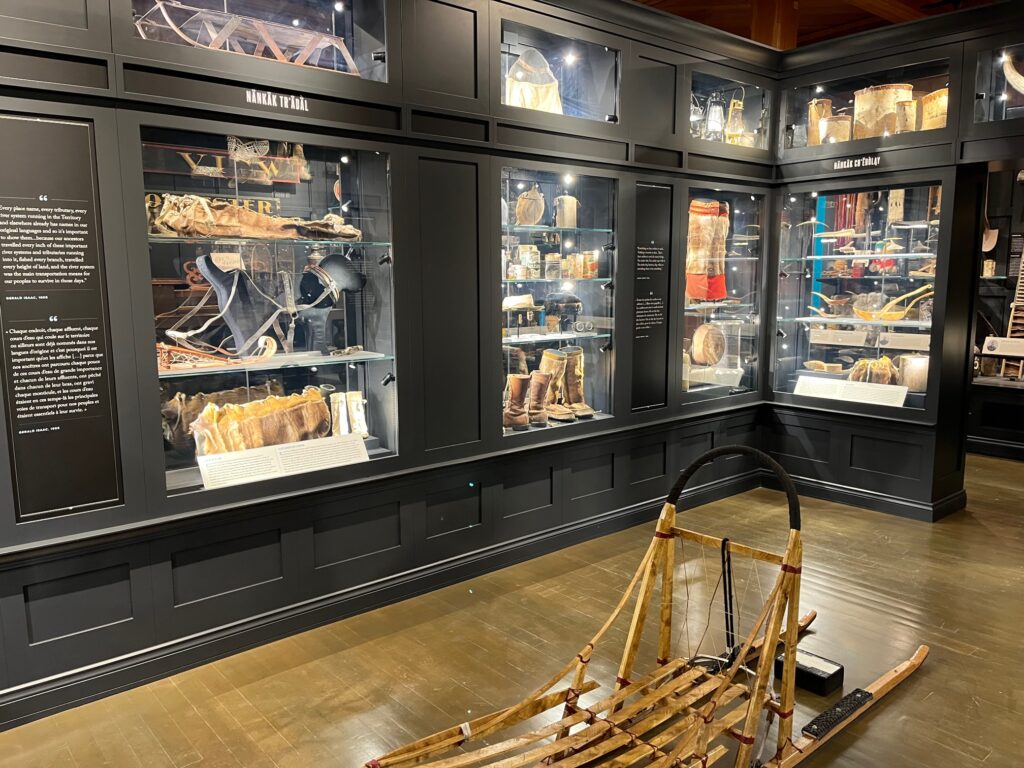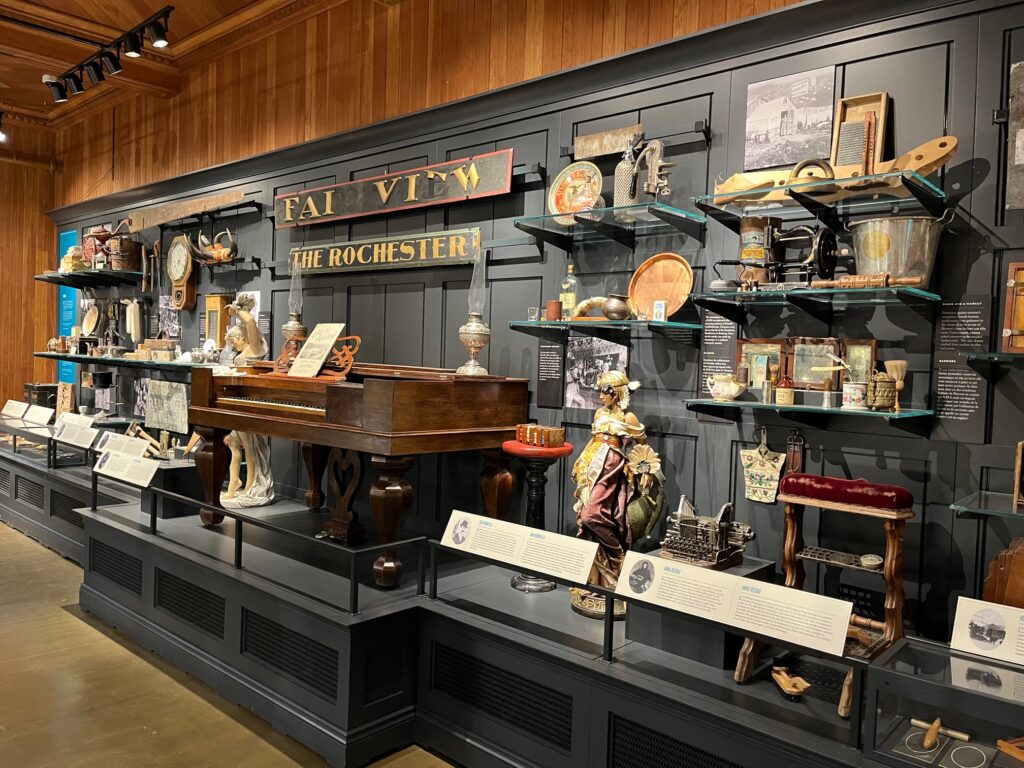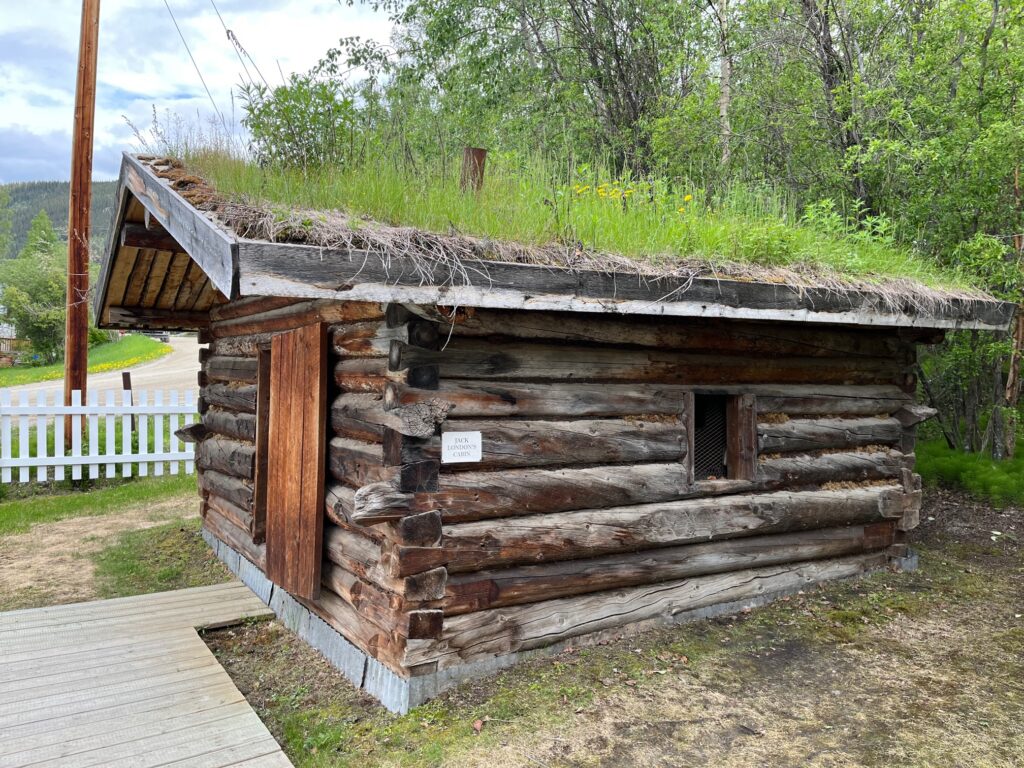



Our first day after being released from quarantine was a partly cloudy and partly sunny day and the temperature climbed to about 65 degrees. We took advantage of our remaining time in town by visiting the local Dawson City Museum. The museum is located in a beautiful two-story colonial style building. The museum has a large collection of photographs, documents and artifacts from the Klondike region and, in particular, from the goldrush days. The display cases, descriptions and historical data were all presented in a clear, crisp and elevated style on par with any fine city museum around the world.
As with much of north America, the local native people were pushed out of their native land at the whim of the white man. Only after twenty-five years of negotiations with the Canadian government was some of the local land released to its rightful owners.
The museum featured many people who made a splash in the Yukon region either for a short amount of time during the goldrush or for a lifetime living in the region. Some well-known for the businesses they owned, one for owning the longest running bordello in town and some for keeping the city alive after the short-lived days of the goldrush. After the goldrush, many businesses closed up and their owners left town as fast as they had arrived, leaving behind buildings filled with merchandise.
Our next stop was the Jack London Museum honoring the famous author who lived in the Klondike for a short time in 1897 and 1898. When Jack was just 21 years old he made his way from Oakland, California, where he was born, to the Klondike, hoping to make it rich. Instead of making it rich, he found a very difficult life, a very cold winter and a lack of food for the number of residents at the time. His lack of good food led to him getting scurvy which also accounted for his short-lived time in the Klondike.
While Jack did not write during his time in the Klondike, he did gather stories told by the locals over the cold winter. Once back in Oakland, he recovered from the scurvy and he began to write fiction using his experiences in the Klondike as inspiration. Jack wrote prolifically and was one of the most popular and well-paid authors of his time. He made over a million dollars a year in the early 1900’s. On average he wrote three books a year until his untimely death at the age of 40 in Glen Ellen, California, in Sonoma County. Among his most well known books are Call of the Wild, White Fang, The Sea Wolf and Martin Eden.
In the 1960’s the cabin that Jack London lived in during his time in the Klondike was discovered. For years, this cabin location was unknown. The port of Oakland, which has a Jack London Square, agreed to help with the bill to have his cabin brought from the backwoods if they could have half a piece of the historic cabin. It was agreed that the cabin would be disassembled and split equally between Oakland and Dawson City. The cabin was rebuilt into two new cabins using additional timbers. The museum here now has a Jack London cabin as does the city of Oakland.
Next to the cabin is a small visitors center where they have walls filled with photos of Jack London’s life, with emphasis on his time in the Klondike. A lovely lady who was hosting the visitors center gave a 30-minute talk about Jack’s time here in the Klondike. She has been a resident here for 44 years and has a love for Jack’s books. It was a very interesting museum.
